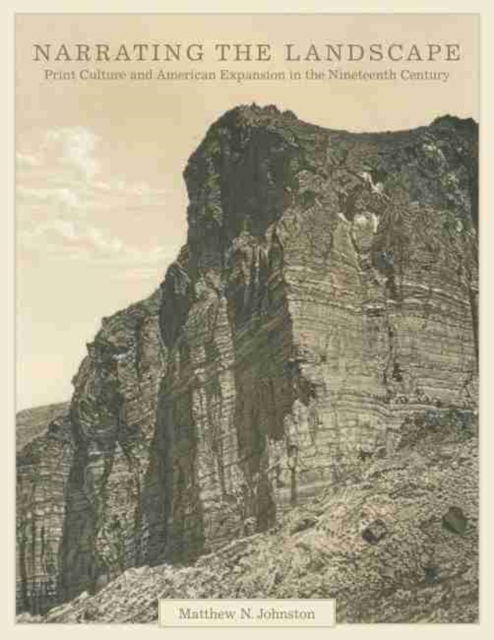Narrating the Landscape, Volume 24: Print Culture and American Expansion in the Nineteenth Century

Narrating the Landscape, Volume 24: Print Culture and American Expansion in the Nineteenth Century
The American nineteenth century saw a largely rural nation confined to the Eastern Seaboard conquer a continent and spawn increasingly dense commercial metropolises. This time of unprecedented territorial and economic growth has long been thought to find its most sweeping visual equivalent in the period's landscape paintings. But, as Matthew N. Johnston shows, the age's defining features were just as clearly captured in, and motivated by, visual material mass-produced through innovations in printing technology. Illustrated railroad and steamboat guidebooks, tourist literature, reports of geological surveys, ethnographic studies: all of these new print vehicles brought new meanings to the interplay of time, space, and place as American continental expansion peaked. Instrumental to that project of national and industrial growth, these commercial and scientific publications introduced readers, travelers, and citizens to a changing North American landscape made more accessible by new travel routes blazed between 1825 and 1875. More fundamentally, as Johnston shows in his nuanced analysis, by simulating new temporal frameworks through their presentation of landscape, these print materials established new models of consumption and new kinds of knowledge critical to expansion. Johnston relates these sources to traditional art historical subjects--the landscapes of the Hudson River school, luminist paintings by John Kensett and William Trost Richards, Native portraits painted by George Catlin, and photographs by Timothy O'Sullivan--to show how key discourses associated with expansion shifted away from picturesque strategies pairing imagery and narrative toward entirely new forms that gave temporal structure to viewers' experience of an emerging modernity. Revealing the crucial role of print and visual culture in shaping the nineteenth-century United States, Narrating the Landscape offers fresh insight into the landscapes Americans beheld and imagined in this formative era.
PRP: 216.69 Lei
Acesta este Prețul Recomandat de Producător. Prețul de vânzare al produsului este afișat mai jos.
195.02Lei
195.02Lei
216.69 LeiLivrare in 2-4 saptamani
Descrierea produsului
The American nineteenth century saw a largely rural nation confined to the Eastern Seaboard conquer a continent and spawn increasingly dense commercial metropolises. This time of unprecedented territorial and economic growth has long been thought to find its most sweeping visual equivalent in the period's landscape paintings. But, as Matthew N. Johnston shows, the age's defining features were just as clearly captured in, and motivated by, visual material mass-produced through innovations in printing technology. Illustrated railroad and steamboat guidebooks, tourist literature, reports of geological surveys, ethnographic studies: all of these new print vehicles brought new meanings to the interplay of time, space, and place as American continental expansion peaked. Instrumental to that project of national and industrial growth, these commercial and scientific publications introduced readers, travelers, and citizens to a changing North American landscape made more accessible by new travel routes blazed between 1825 and 1875. More fundamentally, as Johnston shows in his nuanced analysis, by simulating new temporal frameworks through their presentation of landscape, these print materials established new models of consumption and new kinds of knowledge critical to expansion. Johnston relates these sources to traditional art historical subjects--the landscapes of the Hudson River school, luminist paintings by John Kensett and William Trost Richards, Native portraits painted by George Catlin, and photographs by Timothy O'Sullivan--to show how key discourses associated with expansion shifted away from picturesque strategies pairing imagery and narrative toward entirely new forms that gave temporal structure to viewers' experience of an emerging modernity. Revealing the crucial role of print and visual culture in shaping the nineteenth-century United States, Narrating the Landscape offers fresh insight into the landscapes Americans beheld and imagined in this formative era.
Detaliile produsului









